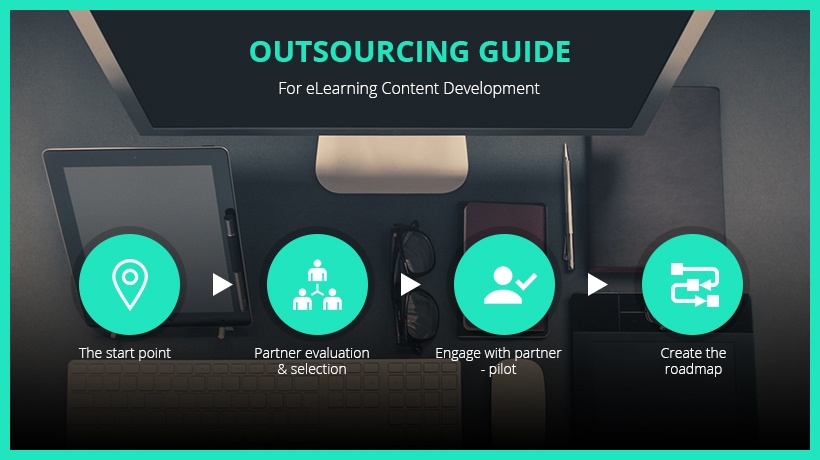Creating An eLearning Outsourcing Strategy
To help you get started, here are 3 steps to create an eLearning outsourcing strategy:
Step 1: Collect Data
Typically, the best place to start in developing a training sourcing strategy is to assess your organization’s historical training profile. This will enable you to understand the nuances of training moving forward.
This task is a little more complex than other category spend patterns, especially in multinational organizations without a centralized budget process. Just getting line of sight on all of your organization’s training spend can be quite a challenge. This is due to a number of factors:
- If your organization’s training budgets are decentralized as mentioned, then the visibility to overall training spend becomes more complex as each department and lines of business will have their own training budgets to review.
- You may have to review your company’s travel and expense data (if your organization does indeed capture transactional details). Conference and hotel expenses can include offsite training engagements which are “buried in these details”.
- As you assess spending patterns for this category (or any category for that matter), try to capture the true cost of ownership (total costs) such as:
- Staff support costs (both direct and indirect).
- Infrastructure support costs, such as maintenance and annual software license fees.
- Administration support costs, either in house or third party, for coordination any training events such as scheduling, testing, surveys, etc.
- Any other support costs, such as audio/visual equipment, printing, and meals.
- Employee productivity costs (short term) when production line workers leave the production line in order to attend either class room or offsite training.
Some suggested information sources for assessing training would include the following:
- Internal.
-
- Stakeholder interviews.
- Spend data via company accounts payable reports.
- Spend data via any purchasing cards (i.e., Amex card).
- System reporting via category code or Standard Industry Code (SIC).
- External.
- Industry trade associations (e.g. Training Industry Inc.).
- Peer purchasing groups (e.g., Category and Sourcing Managers - CASME).
- Local chapter of Institute of Supply Management (ISM).
- Consultants and research providers.
- Existing supplier base.
Step 2: Conduct Analysis
In developing a strategy for training, it’s prudent to take the macro (or global) view to understand the common elements of the training category. As important as a historical perspective is to gain insight, the most import consideration is to forecast your training requirements for the foreseeable future. For an accurate understanding, you must combine your knowledge of past activities with the organization’s plans for the future inclusive of any annual agreements that will continue long term.
Some of these questions that you will be seeking answers on can include the following to put you on the right track:
- What is the projected spend?
- What are the total costs of ownership such as staffing, outside consultants, development fees etc. (remember this task from your collect data stage)?
- Does your organization have key suppliers?
- What are the characteristics of a key supplier?
- How are the suppliers selected?
- Do you purchase on:
- A project by project basis.
- Part of a longer term phased implementation project plan.
- A mix of both.
- Do other parts of the organization have similar needs for the training contemplated?
Step 3: Develop The Strategy
The strategy development phase is to identifying upcoming projects that are to be sourced at global, regional, or local levels across the organization.
Project Impact
- If the project will impact stakeholders across lines of businesses and across multiple geographic areas, then the project should be considered global.
- If the project will impact stakeholders in just a particular area, such as regional product launch, then the project should be classified as regional.
- If the training project has localized impact then, of course, the project is local.
- Procurement and the training department’s resources (personnel) should also be aligned to support any global/regional/local rollouts as well.
Once your strategy has been developed (and this strategy should include stakeholder concurrence), the next phase would be to implement your learning and development procurement strategy.
To read about the next 3 steps, download How to Buy Learning and Development, a 6-step Procurement Strategy Guide.

What Is Your Company’s Strategy For eLearning Outsourcing?
A simple question with complex answers! That’s why I wrote How to Buy Learning and Development, to help both the procurement professional and the Chief Learning Officer understand the challenges and opportunities of outsourcing training.








